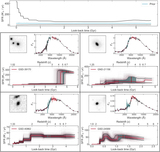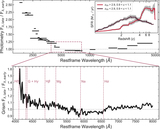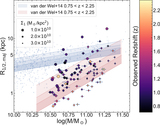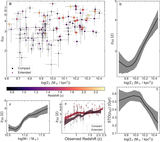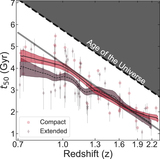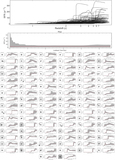Image Details
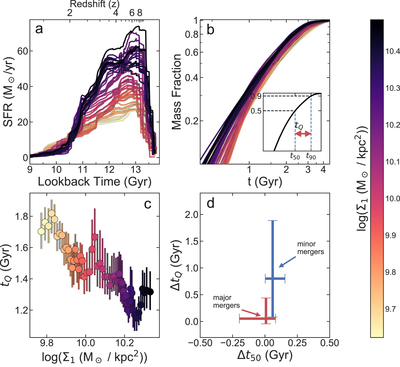
Caption: Figure 6.
The relation between SFHs, quenching times, and stellar-mass surface density (Σ1) for early forming galaxies (﹩{z}_{50}\gt 2.9﹩). (a) shows a the mean SFH for galaxies stacked as a function of ﹩\mathrm{log}({{\rm{\Sigma }}}_{1})﹩ in bins of 0.2 dex. (b) shows the cumulative fraction of stellar mass formed. Both (a) and (b) show that galaxies with higher ﹩\mathrm{log}({{\rm{\Sigma }}}_{1})﹩ form more stellar mass earlier with higher peak SFRs, and experience a more rapid decline in their SFR compared to galaxies with lower Σ1. (c) shows the quenching timescale (tQ) defined as the time between when the galaxy had formed 50% and 90% of its stellar mass, as a function of Σ1, with error bars derived from bootstrapping. Galaxies with higher Σ1 have shorter quenching times. (d) shows the effects of mergers on the SFH timescales. We randomly merged simulated galaxies and measured the change in tQ and t50 from major mergers (mass ratios >1:4; red) and minor mergers (mass ratios <1:10; blue). The error bars show the inter-68%-tile scatter (68% of the simulations fall in this range).
Copyright and Terms & Conditions
© 2020. The American Astronomical Society. All rights reserved.



